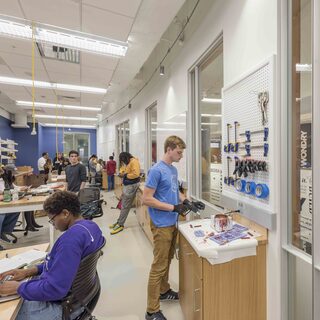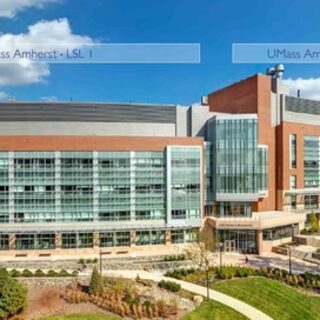Tradeline's industry reports are a must-read resource for those involved in facilities planning and management. Reports include management case studies, current and in-depth project profiles, and editorials on the latest facilities management issues.
Latest Reports
Top 10 Reports of 2017
- Space Planning and Management Software for the 21st Century Workplace
- Rodent Cage Technology Evolves Beyond the Simple Holding Vessel
- The Future of Space is Flexible and People Focused
- Centralized Research Support Facility Reaping Significant Benefits
- Eli Lilly Employs Shared Space and Innovative Infrastructure
- The Gold Standard of Maker Space at MIT
- The Future of Research Facility Design
- Virtual and Augmented Reality are Reinventing Medical Education
- Unique Survey Tools that Inform Design and Utilization of Academic Medical Campuses
- Superlabs Drive Collaboration, Flexibility, and Space Efficiency in Academic Sciences
Engineering and Science Building (ESB)
Vanderbilt University’s new Engineering and Science Building (ESB) brings the physical sciences and engineering together to expand interdisciplinary research in biomedical engineering, energy, and materials; recruit faculty in areas of nanotechnology and environmental engineering; and create a new undergraduate research-focused culture on campus.
Congress Moves to Increase NIH Budget; Secure Indirect Cost Recovery
There are positive signs that funding for scientific research will not only be maintained, but will once again increase. Earlier this month, the Senate Appropriations Committee overwhelmingly approved $36.1 billion for the National Institutes of Health for the upcoming fiscal year. If approved intact, it will mark the third consecutive year that the NIH receives a $2 billion increase. The House Appropriations Committee already approved a $1.1 billion increase.
Equipment-Driven Planning for Capital-Intensive Academic Research Facilities
The University of Massachusetts Amherst (UMass Amherst) recently completed the construction and fit-out of their new Life Science Laboratories after receiving a $95 million grant from the Massachusetts Life Sciences Center (MLSC)—a quasi-state agency dedicated to growing the state’s life sciences industry. The new interdisciplinary research wing features state-of-the-art equipment and core resources that will be shared across multiple research teams and industry partnerships. While the new core labs were built into a pre-existing shell with an open floorplate and operational MEP, the final design was driven by the cost-intensive equipment list. Since the agency grant designated a specific amount of funding for the equipment, the type of equipment was known but exact model and vendor was not known before many of the other design and programming decisions were made.
The Future of Research Facility Design
Five years ago, Tradeline sought experts to predict the future—specifically, the future of research lab design and construction. Today, we take a look back at those predictions, and gather some new ones, looking at trends in research programs and funding, and how those trends affect the decisions institutions are making when they build and renovate their laboratory spaces.



